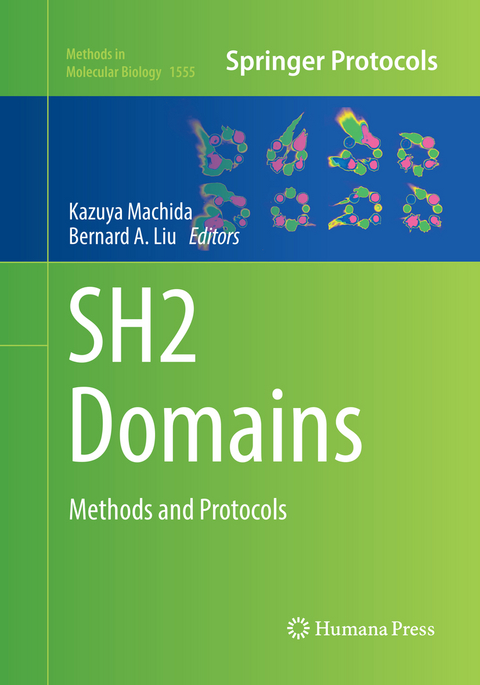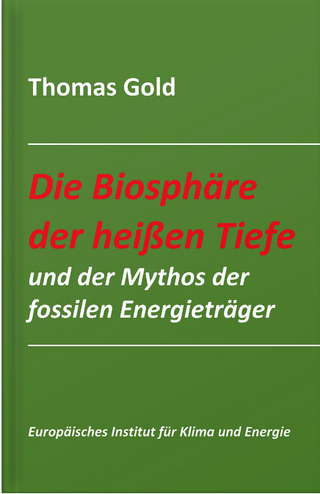
SH2 Domains
Humana Press Inc. (Verlag)
978-1-4939-8295-0 (ISBN)
Cutting-edge and thorough, SH2 Domains: Methods and Protocols is a valuable resource for computational biologists, biochemists, structural biologists, cell biologists, pathologists, and people interested in SH2 domains and phosphotyrosine signaling. Researchers who are investigating how protein interaction domain mediate specificity in signaling systems may also find this book informative.
Kazuya Machida, MD, PhD Dept of Genetics and Developmental Biology Univ of Connecticut Health Center Cell and Genome Sciences, Farmington, CT, USA Tel: 860-679-1830; Email: machida@neuron.uchc.edu
Introduction: History of SH2 Domains and Their Applications.- What Have We Learned from SH2 Domains?.- Hidden Markov Models for Protein Domain Homology Identification and Analysis.- Classification and Lineage Tracing of SH2 Domains Throughout Eukaryotes.- SH2 Ligand Prediction-Guidance for In-Silico Screening.- An Efficient Semi-Supervised Learning Approach to Predict SH2 Domain Mediated Interactions.- Proteomic Clustering Analysis of SH2 Domain Datasets.- Expression and Production of SH2 Domain Proteins.- Expression and Purification of Soluble STAT5b/STAT3 Proteins for SH2 Domain Binding Assay.- Purification of SOCS (Suppressors of Cytokine Signalling) SH2 Domains for Structural and Functional Studies.- Expression and Purification of SH2 Domains Using Baculovirus Expression System.- Functionally Altered SH2 Domains for Biochemical Studies: Loss of Function Mutant and Domain Concatenation.- Creation of Phosphotyrosine Superbinders by Directed Evolution of an SH2 Domain.- Structural Characterization of Monomeric/Dimeric State of p59fyn SH2 Domain.- NMR Chemical Shift Mapping of SH2 Peptide Interactions.- Calorimetric Measurement of SH2 Domain Ligand Affinities.- Binding Assays Using Recombinant SH2 Domains: Far-Western, Pull Down, and Fluorescence Polarization.- In-Solution SH2 Domain Binding Assay Based on Proximity Ligation.- Alpha-Based Multiplexed Assay for Identifying SH2 Domain Antagonists.- Characterizing SH2 Domain Specificity and Network Interactions Using SPOT Peptide Arrays.- High Throughput Quantification of SH2 Domain-Phosphopeptide Interactions with Cellulose Peptide Conjugate Microarrays.- SH2 Domains as Affinity Reagents for Phosphotyrosine Protein Enrichment and Proteomic Analysis.- Identification of Tyrosine Phosphorylated Proteins by SH2 Domain Affinity Purification and Mass Spectrometry.- Analysis of the Global Changes in SH2 Binding Properties Using Mass Spectrometry Supported by Quantitative Stable Isotope Labeling by Amino Acids in Cell Culture (SILAC) Technique.- Using Reciprocal Protein-Peptide Array Screening to Unravel Protein Interaction Networks.- Rosette Assay: Highly Customizable Dot-Blot for SH2 Domain Screening.- Microwestern Arrays for Systems-Level Analysis of SH2 Domain-Containing Proteins.- SH2 Binding Site Protection Assay: A Method for Identification of SH2 Domain Interaction Partners by Exploiting SH2 Mediated Phosphosite Protection.- Real Time Single Molecule Visualization of SH2 Domain Membrane Recruitment in Growth Factor Stimulated Cells.- SH2 Domain-Based FRET Biosensor for Measuring BCR-ABL Activity in Living CML Cells.- SH2 Domain Histochemistry.
| Erscheinungsdatum | 25.08.2018 |
|---|---|
| Reihe/Serie | Methods in Molecular Biology ; 1555 |
| Zusatzinfo | 79 Illustrations, color; 39 Illustrations, black and white; XIV, 558 p. 118 illus., 79 illus. in color. |
| Verlagsort | Totowa, NJ |
| Sprache | englisch |
| Maße | 178 x 254 mm |
| Themenwelt | Naturwissenschaften ► Biologie ► Biochemie |
| Naturwissenschaften ► Biologie ► Mikrobiologie / Immunologie | |
| Schlagworte | cell signaling • conventional binding assays • high-throughput and proteomics approaches • phosphotyrosine signaling • receptor tyrosine kinases (RTKs) • SH2-mediated interactions • Structural Analysis |
| ISBN-10 | 1-4939-8295-8 / 1493982958 |
| ISBN-13 | 978-1-4939-8295-0 / 9781493982950 |
| Zustand | Neuware |
| Informationen gemäß Produktsicherheitsverordnung (GPSR) | |
| Haben Sie eine Frage zum Produkt? |
aus dem Bereich


